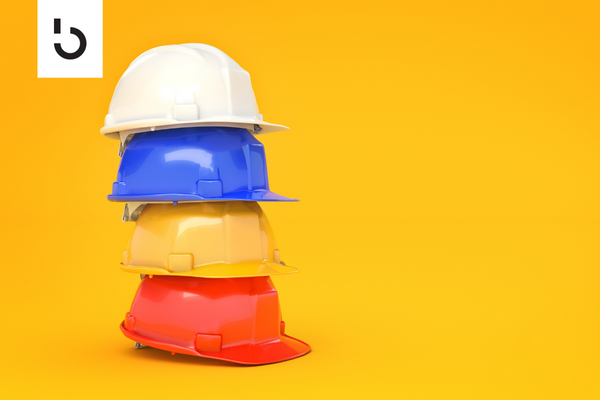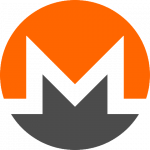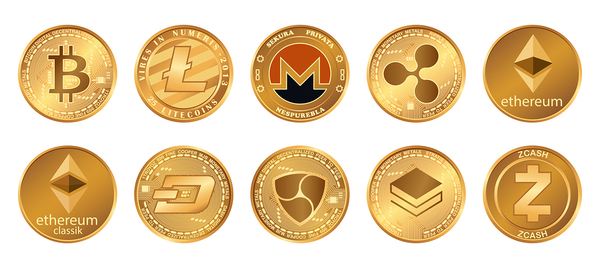
Bitcoin mining is a tough subject. In the early days of bitcoin, anyone with a powerful CPU and some technical know-how could contribute to the chain and earn a few tokens on the side. However, mining is now a technological mountain where advanced rigs, powerful GPUs, and mining consortiums are at the top of the hill.
That doesn’t mean mining isn’t possible or even profitable. While bitcoin mining may be beyond many of us, it is still possible to mine altcoins with a GPU (or even a CPU) these days.
Regardless of your type of rig, we’re talking about the world of crypto mining and whether you can make it profitable in 2024.
Crypto Mining Profitability Changes Rapidly
 Vergecoin (XVG)
Vergecoin (XVG)
Block Reward: 6.25 XVG
Block Time: 30 seconds
Revenue per day: $18.89
Verge is an open-source, community-driven cryptocurrency that promotes complete anonymity in transactions.
Launched in 2014, Verge is an offshoot of DogeCoin and was introduced to provide anonymous private transactions similar to other privacy coins such as Monero, Pivx, and Zcash.
Verge hides users’ IP addresses and locations, making transactions untraceable. It uses multiple distributed networks such as the Onion Router (TOR) and Invisible Internet Project (I2P) that bounce communications over a network of relays and tunnels, making it impossible to trace the user’s identity or location. The I2P encrypts user data.
Though Verge’s use by some adult sites brought it some notoriety, it is still going strong. Verge plans to introduce a sidechain through the Rootstock project to process smart contracts.
Verge now supports multi-algorithm mining; one can choose the GPU or ASIC protocol. This fact, plus additional layers of privacy, are added to the network, making it appealing for cross-border payments and microtransactions.
 Peercoin (PPC)
Peercoin (PPC)
Block Reward: 55.1727 PPC
Block Time: 10 minutes
Revenue (per day): $5.25
Launched in August 2012, Peercoin utilizes both Proof-of-Stake and Proof-of-Work systems. While Peercoin may not yet be a household name, it was the first altcoin to use the PoS system for processing transactions. This mining method requires little energy, making Peercoin the first “green” cryptocurrency.
Peercoin was one of the top cryptocurrencies in its early years. While it’s less popular now, the coin has a dedicated and passionate development team behind it.
Miners holding Peercoin do so for its unique consensus mechanism and long-standing history in the market. Additionally, due to its hybrid PoS/PoW model, it’s still one of the most energy-efficient coins to mine–an attractive prospect for some miners.
 Dogecoin (DOGE)
Dogecoin (DOGE)
Block Reward: 10,000 DOGE
Block Time: 1 minute
Revenue (per day): $4.77
Dogecoin started when two software engineers decided to poke fun at the wild speculation of cryptocurrencies. What began as a joke became an impressive market capitalization and a powerful lesson for crypto investors and miners.
The parody token went live in 2013 and reached mainstream popularity when Elon Musk, the CEO of Tesla, publicly endorsed it in 2019. Now, Dogecoin has a market capitalization of $21.98 billion, with over 131 million DOGE in circulation.
Mining Dogecoin became increasingly popular partly because Musk continues to endorse it. It reached its highest revenue figures this past year, and mining will likely remain profitable for the foreseeable future.
Its low transaction fees make it suitable for small, everyday transactions, and many people continue to actively support the coin because of its media attention and community support. Check out our complete breakdown of Dogecoin.
 Bitcoin Cash (BCH)
Bitcoin Cash (BCH)
Block Reward: 6.25 BCH
Block Time: 10 minutes
Revenue (per day): $3.65
Not to be confused with bitcoin (BTC), Bitcoin Cash serves as an alternative for miners and developers concerned about the usability and scalability of BTC.
Bitcoin Cash can process transactions faster than the bitcoin network, resulting in shorter wait times and lower transaction processing fees. However, besides block size, Bitcoin Cash has the same mining limitations as bitcoin. It’s deflationary like bitcoin, meaning only 21 million coins will ever exist. It also uses the same SHA-256 hashing algorithm, with the reward halved roughly every four years.
While it used to be way more profitable to mine bitcoin, the profitability of Bitcoin Cash is catching up. And, thanks to its fast transactions and increased block size, it’s easier to mine and create transfers for lower fees.
Investors mine and buy Bitcoin Cash for its accessibility and liquidity. For a more in-depth breakdown of Bitcoin Cash, check out our BMJ scorecard.
 Bitcoin (BTC)
Bitcoin (BTC)
Block reward: 6.52 BTC
Block time: 10 minutes
Revenue per day: $3.17
Bitcoin has become the most-recognized cryptocurrency brand. Since its inception in 2009, the cryptocurrency has lived through turbulent times, reaching phenomenal heights and a top valuation of $65,000.
Bitcoin’s supply cap is 21 million, and mining rewards are halved after every 210,000 blocks. In 2009, the first reward was 50 new bitcoins; today, the reward is down to 6.25 bitcoins. The next halving is expected in April 2024.
In other words, mining will get more complex over time. If you want to get involved, starting sooner rather than later is better.
Investors and miners holding bitcoin believe that the next bitcoin halving will help bitcoin prices recover and even exceed the last bull run. It’s difficult to make much money without joining a mining pool.
 Monero (XMR)
Monero (XMR)
Block Reward: 0.65 XMR
Block Time: 2.00 minutes
Revenue (per day): $0.09
Many early blockchain adopters like Monero because of its privacy and anonymity. It became very popular among GPU miners because the Monero development team is committed to keeping Monero ASIC-resistant. They are so committed to this path that they changed their consensus algorithm in 2018 in response to releasing an ASIC rig capable of mining Monero.
While this change makes it likely that Monero will remain accessible for home miners using a simple GPU, the reality is that GPU mining itself is rarely profitable, regardless.
Monero admits CPU mining is far more efficient when compared with GPU mining. Any XMR you mine now could be worth far more in the future, making GPU mining profitable in the long run.
Monero historically goes back and forth between profitability and minor losses. Therefore, you will want to keep an eye on it to determine if it is profitable to mine at any given time. For more information on this cryptocurrency, see our BMJ scorecard.
 Vertcoin (VTC)
Vertcoin (VTC)
Block Reward: 12.50 VTC
Block Time: 2.50 minutes
Revenue (per day): -$0.72
Vertcoin considers itself “the people’s coin.” It was developed with specific properties to ensure that it remains ASIC-resistant. Its developers might be the most strongly ASIC-resistant team. Therefore, it will likely remain a good altcoin to mine using your GPU.
Vertcoin also has a unique miner explicitly created to mine VTC, and it’s probably one of the most accessible miners to use. Once you download and install the miner, all you need to do is join a mining pool, and you’re ready to go.
Investors purchase Vertcoin for its ASIC resistance, security, and lightning network integration. Due to its low transaction fees and fast processing times, Vertcoin is mainly used for microtransactions in e-commerce. This has allowed Vertcoin to build a strong community following.
 Ethereum Classic (ETC)
Ethereum Classic (ETC)
Block Reward: 3.20 ETC
Block Time: 15.00 seconds
Revenue (per day): -$0.80
Since the Merge and move to PoS validation, many miners have taken refuge in Ethereum Classic. In 2017, Ethereum Classic adopted the bitcoin way, with a fixed ETC supply cap and issuance rate.
Although there’s now too much supply and insufficient demand, mining Ethereum Classic can still be slightly profitable for at-home miners using GPU or ASIC mining machines. However, it can’t be mined with regular CPUs.
Apart from its historical significance, investors and miners hold the Ethereum classic for its immutability and intelligent contracts. Designed to compete directly against Ethereum, Ethereum Classic remains a pillar of the crypto community. Hence, it’s easy to see why it continues to be a popular platform among blockchain enthusiasts.
 Horizen (ZEN)
Horizen (ZEN)
Block Reward: 3.75 ZEN
Block Time: 2.50 minutes
Revenue (per day): -$2.41
Horizen promotes privacy and anonymous transactions. Like Zcash, the Horizen team embraced ASIC miners because it made their network more stable and secure. Even so, it remains a profitable coin for GPU crypto miners.
Enabling the use of privacy-preserving security features, Zen is used by developers to build secure decentralized applications. Because of this fact and the fact that Horizen was the first transport layer security network, investors continue to mine this coin to this day.
 Litecoin (LTC)
Litecoin (LTC)
Block reward: 12.50 LTC
Block time: 2.5 minutes
Revenue per day: -$5.24
Litecoin, a pioneer in altcoins, was introduced in 2011 by Charlie Lee, an ex-Google employee, to enable faster and cheaper blockchain-based transactions.
Eventually, the coin saw massive adoption, reaching a market capitalization of $1 billion in 2013.
Mining Litecoins is much easier as it is done on a standard GPU. Litecoin runs on the Scrypt proof-of-work algorithm, different from the ASIC (Application-Specific Integrated Circuit) setup used by bitcoin. It’s also easier to mine, and the entry barrier is low.
Both result in quicker block confirmations, meaning that transfers are confirmed faster. Check out our blockchain risk scorecard for a full breakdown of this cryptocurrency.

Other Altcoins to Consider for Crypto Mining
While the above altcoins are some of the most profitable to mine in 2024, other altcoins are worth considering that look to remain ASIC-resistant.
Keep an eye on Feathercoin (FTC), DigiByte(DGB), Einsteinium (EMC2), and Bitcoin Gold (BTG).
Should You Mine Crypto in 2024?
Contrary to popular belief, you don’t need a nuclear power plant or wind turbine to mine crypto at home successfully. Crypto mining comes with many variables, though there are many people out there who continue to mine crypto successfully in 2024.
If done efficiently, one can profit from mining various altcoins and bitcoin, in addition to buying and holding. To succeed at crypto mining in 2024, you’ll need to invest in efficient hardware and have access to affordable electricity.
Additionally, because the network of mining machines is so extensive these days and your chances of regularly finding a block are so low, you’ll need to mine through a mining pool. [See our article on Best Mining Pools here.]
Investor Takeaway
So, is it still profitable to mine crypto at home? Yes … but it isn’t always easy.
Unless you’re willing to dive into mining pools or other collective mining organizations, bitcoin probably isn’t your best bet. Likewise, depending on the value and usage of a particular altcoin, you may find yourself scraping by just to break even.
But, with the correct planning, you could also find the right fit of hardware, blockchain, and value to make mining worthwhile. The gains aren’t taking you “to the moon” in and of themselves, but they can be a great form of wealth generation and participation in a project you value.
For more tips on building wealth with bitcoin and crypto, subscribe to our daily Bitcoin Market Journal newsletter.
- SEO Powered Content & PR Distribution. Get Amplified Today.
- PlatoData.Network Vertical Generative Ai. Empower Yourself. Access Here.
- PlatoAiStream. Web3 Intelligence. Knowledge Amplified. Access Here.
- PlatoESG. Carbon, CleanTech, Energy, Environment, Solar, Waste Management. Access Here.
- PlatoHealth. Biotech and Clinical Trials Intelligence. Access Here.
- Source: https://www.bitcoinmarketjournal.com/crypto-mining-most-profitable/



